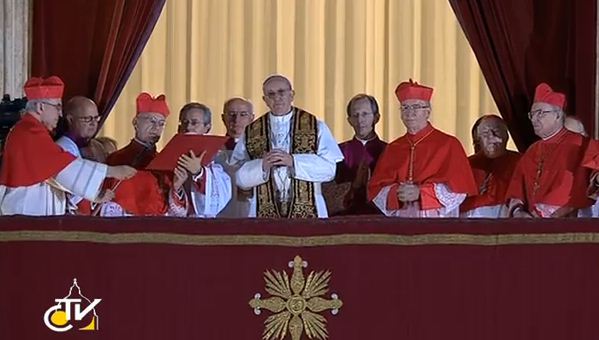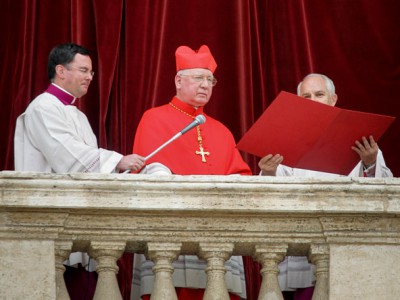The Blue Cheese, Bleu de Gex, which is made using the mold Penicillium, a member of the Kingdom Fungi.
The Kingdom Fungi -- the taxonomic Kingdom of the various Fungus species -- is tremendously important to mankind and to the natural world. Yet, it is rather little know, nor very much liked. Nevertheless, as Aristotle notes in his Parts of Animals:
"For if some [creatures] have no graces to charm the sense, yet even these,
by disclosing to intellectual perception the artistic spirit that designed them, give immense pleasure to all who can trace links of
causation, and are inclined to philosophy. Indeed, it would be
strange if mimic representations of them were attractive,
because they disclose the mimetic skill of the painter or
sculptor, and the original realities themselves were not more interesting, to all at any rate who have eyes to discern the
reasons that determined their formation. We therefore must not
recoil with childish aversion from the examination of the
humbler animals." The emphasis is mine -- and while Fungi are not animals, certainly the principle remains the same!
I present here a brief taxonomy of the Kingdom of these "plants without chlorophyll," if you will, rather well aware that taxonomy is always a matter of some dispute, and rarely more than with the Fungi species!
--
KINGDOM FUNGI
- Phylum Chytridiomycota [Chytrid Fungi; Unicellular
fungi that lack mycelium, including the parasitic Batrachochytrium dendrobatidis that infects amphibians]
- Phylum Neocallimastigomycota [Rumen-dwelling
fungi similar to the Chytrids]
- Phylum Blastocladiomycota
[Similar group of fungi to the above, marked by varied habitats and
alternation of generations, including the Allomyces soil saprophytes of temperate regions]
- Phylum Zygomycota [Case-like or conjugation Fungi]
- Class Zygomycetes [Fungi such as Bread
Mold, Rhizopus stolonifer, and
Mucor molds; also the Dung-dwelling
Pilobolus species and the
House fly-killing Entomophthora
muscae]
- Class Trichomycetes [Primarily arthropod
digestive tract dwelling fungi]
- Phylum Ascomycota [Sac Fungi]
- Subphylum Pezizomycotina
- Class Plectomycetes
- Order Erysiphales [The plant parasites
called Powdery Mildews]
- Order Eurotiales [Molds, as Penicillium and Aspergillus; False Truffles, Elaphomyces]
- Class Discomycetes
- Order Cyttariales [Plant parasites,
such as the edible gall-producing Cyttaria]
- Order Helotiales [Includes Jelly Clubs
and Microglossum rufum, an
Earth tongue]
- Order Pezizales [In addition to the
Morels and Truffles, this includes the Cup Fungi]
- Family
Morchellaceae [The famous Morels (Morchella)]
- Family
Tuberaceae [Truffles (Tuber)]
{Some put in own Order, Tuberales}
- Class Loculoascomycetes
- Order Capnodiales [Sooty plant molds,
such as Nothofagus of New
Zealand]
- Order Pleosporales [Includes Apiosporina
morbosa, Black knob of cherry]
- Class Pyrenomycetes
- Order Clavicipitales [Parasitic fungi,
such as Claviceps purpurea, Ergot]
- Order Diaporthales [Includes Cryphonectria parasitica, the
Chestnut blight]
- Order Hypocreales [Includes Lobster
Mushroom Fungus, Hypomyces lactifluorum]
- Order Ophiostomatales [Includes Ophiostoma ulmi, Dutch Elm
Disease]
- Order Sordariales [Fungi species that
grow on dung and paper and that grow after fires]
- Order Xylariales [Flask Fungi,
including Xylaria polymorpha,
Dead Man’s Fingers]
- Subphylum Saccharomycotina [These are
yeasts, such as Brewer’s Yeast, Saccharomyces
cerevisiae]
- Subphylum Taphrinomycotina [Variable Fungi,
from yeast-like species to plant parasites]
- Phylum Basidiomycota [Club Fungi]
o
Subphylum Agaricomycotina
{The classes below are considered obsolete,
but are used for convenience}
§
Class Hymenomycetes
·
Order Agaricales [Gilled; the Mushrooms]
o
Family Amanitaceae [Including Amantina bisporigera, the Destroying
Angel]
o
Family Agaricaceae [Including Agaricus bisporus, the Edible Mushroom]
·
Order Aphyllophorales
[Non-gilled; includes Coral, Tooth, and Parchment fungi]
o
Family Polyporaceae [Including Shelf Fungi, as
Sulfur shelf, Leatiporus]
§
Class Gasteromycetes
[Includes Bird’s Nest Fungi and Puffballs, as Calvatia gigantea]
·
Order Phallales
[The Stinkhorns]
§
Class Heterobasidiomycetes
[Includes Jelly Fungi, such as Tremella
mesenterica, witches’ butter]
- Subphylum Pucciniomycotina [Rusts]
- Subphylum Ustilaginomycotina [Smuts]
N.B. –The system of classification presented above is, in large part,
that of The Kingdom Fungi by
Stephenson.
--
Now for a few video clips to illustrate the great wonder of the kingdom:
First, a series of time-lapse videos of the growth of mushrooms -- the fruiting bodies of the Fungi.
This next video brings out the odd quality of many of the Fungi species, and the purpose of the "fruiting bodies" of the Fungi -- especially the wonderful Stinkhorns!
Finally, in the category of the macabre and bizarre, the story of the parasitic Cordyceps Fungus.
For further reading, an excellent book is The Kingdom Fungi by Steven Stephenson. Cf., http://www.timberpress.com/books/kingdom_fungi/stephenson/9780881928914
Thanks to my student, FA, for reminding me to post this material!
Live well!


















